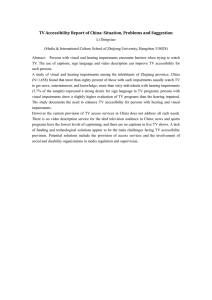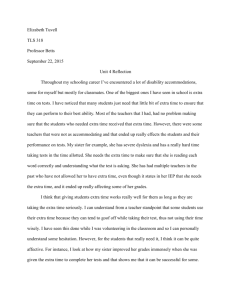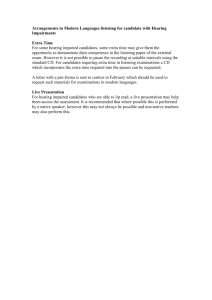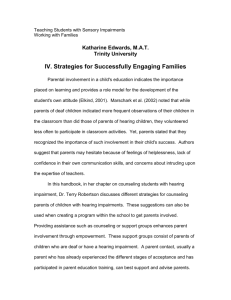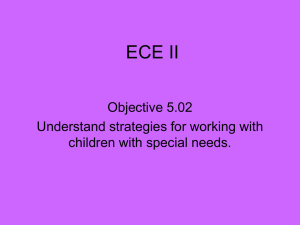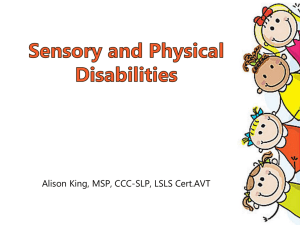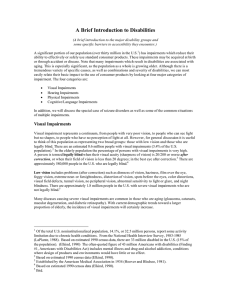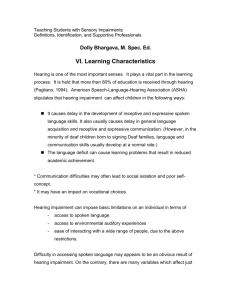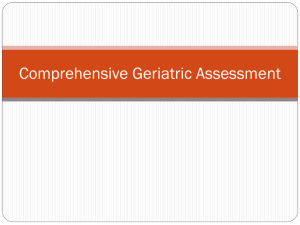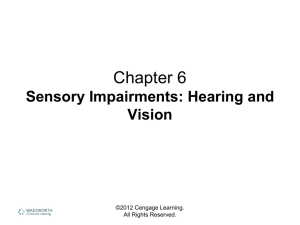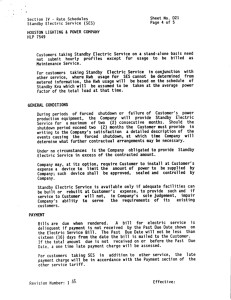IV - Trinity University
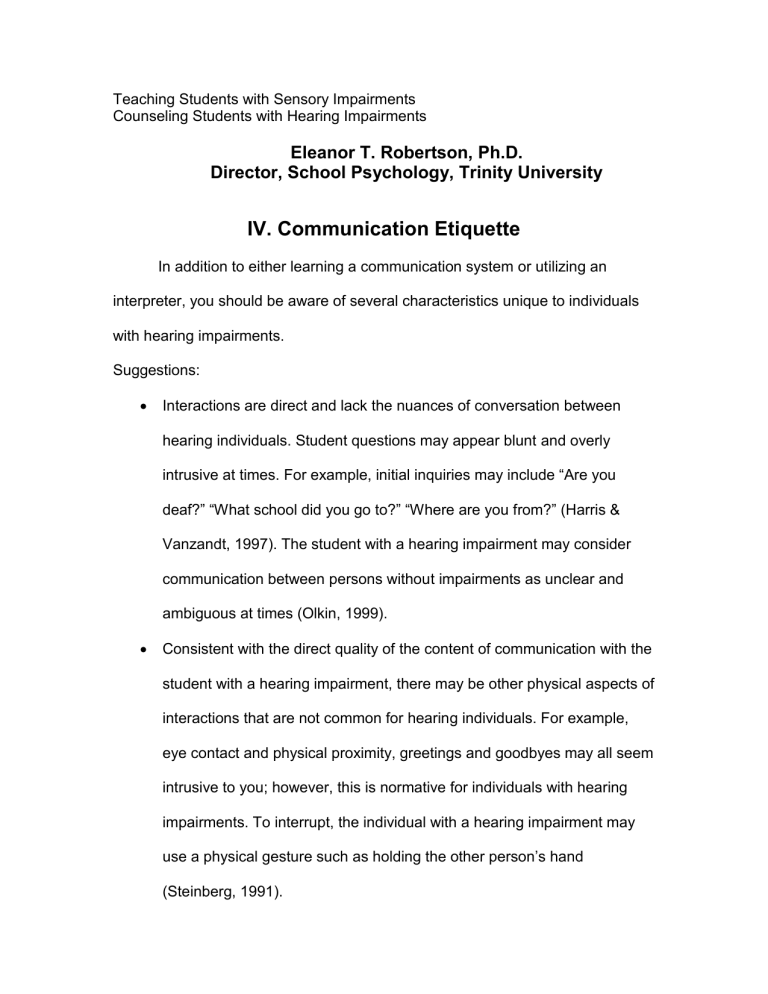
Teaching Students with Sensory Impairments
Counseling Students with Hearing Impairments
Eleanor T. Robertson, Ph.D.
Director, School Psychology, Trinity University
IV. Communication Etiquette
In addition to either learning a communication system or utilizing an interpreter, you should be aware of several characteristics unique to individuals with hearing impairments.
Suggestions:
Interactions are direct and lack the nuances of conversation between hearing individuals. Student questions may appear blunt and overly intrusive at times. For example, initial inquiries may include “Are you deaf?” “What school did you go to?” “Where are you from?” (Harris &
Vanzandt, 1997). The student with a hearing impairment may consider communication between persons without impairments as unclear and ambiguous at times (Olkin, 1999).
Consistent with the direct quality of the content of communication with the student with a hearing impairment, there may be other physical aspects of interactions that are not common for hearing individuals. For example, eye contact and physical proximity, greetings and goodbyes may all seem intrusive to you; however, this is normative for individuals with hearing impairments. To interrupt, the individual with a hearing impairment may use a phys ical gesture such as holding the other person’s hand
(Steinberg, 1991).
Pay attention to the movements of a signer’s eyes, face, and head as these add to the communication (Murphy & Dillon, 2003). Specific facial and eye movements can modify the meaning of communication
(Steinberg, 1991).
An individual communicating in sign language may be erroneously viewed as having a tic or poor interpersonal boundaries since touching other people, waving an arm, or stomping the foot may be methods of gaining attention. Eye contact may also be intense and continuous (Steinberg,
1991).
